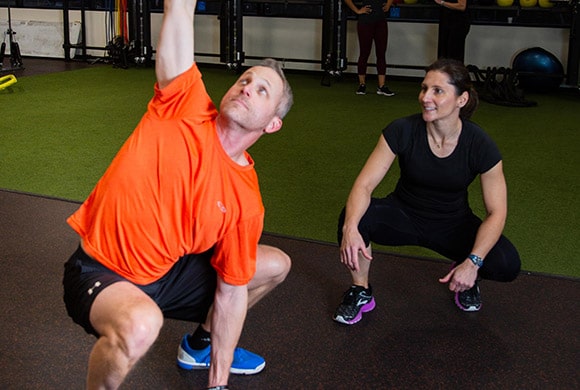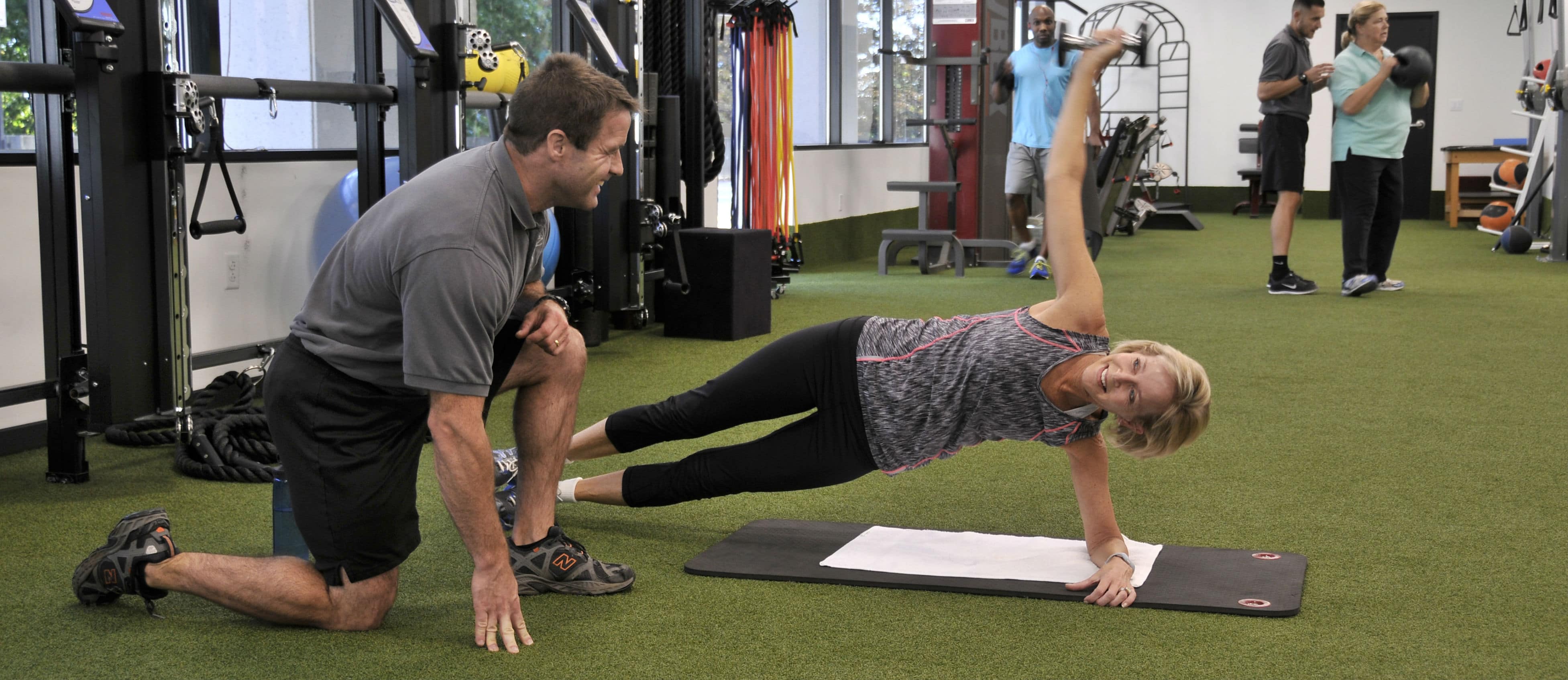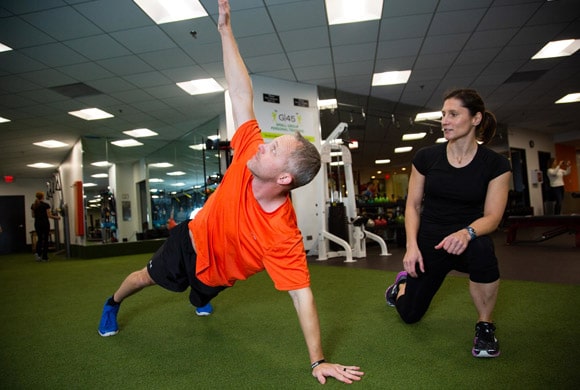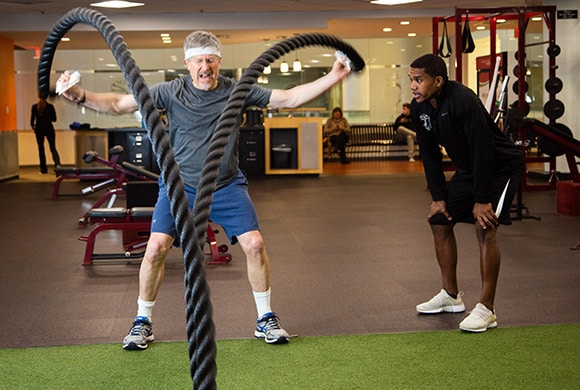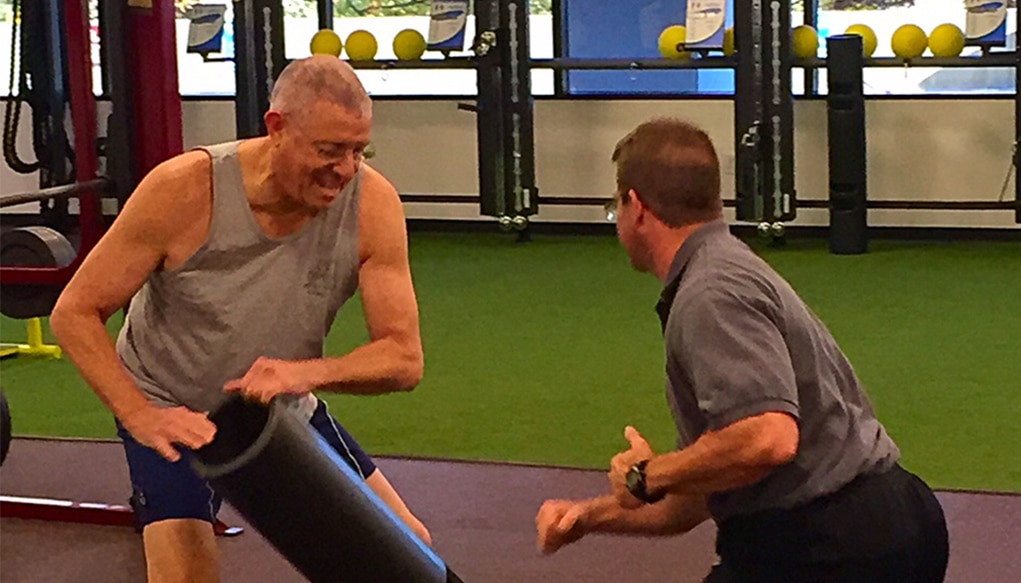Movement quality is an aspect of athletic performance, fitness, and injury reconditioning that is rarely addressed, but is one of the biggest keys to great results in all exercise endeavours. Training to enhance movement quality is training that includes focus on and development of both the mobility (or flexibility) of the body, and the control of that mobility, i.e. stability or strength.
When mobility and stability are in balance, the result is a whole body internal dynamic that expresses itself in greater success in every physical movement. The golf ball flies further, the legs run faster, the insurmountable stairs are easier to climb. Weights (including squirming weights like children and grandchildren) are lighter to lift, and mountains are quicker to master. Movement Quality teaches the body to be powerful, agile, and sturdy, by becoming better integrated in action, performing as one powerful system of muscles instead of a series of disconnected individual segments.
While appropriate training intensity is vital to stimulating the results that most people are looking for in an exercise program, focusing on Movement Quality should be considered a pre-requisite to striving for the greatest training intensity. If a race car (i.e. your body) has bad brakes, a weak suspension, and the wheels are out of alignment, driving it hard to win the race (i.e. workouts emphasising intensity without regard to enhancing quality of movement) could cause more harm than good. Improving Movement Quality by enhancing the relationship between mobility and stability, encouraging symmetry and building skill will improve someone’s “brakes, suspension, and alignment”, and allow them to effectively have bigger engines, more horsepower, and a healthier chassis!
All bodies are different, and training focus and techniques to improve Movement Quality can be tailored to each individual. For example, “Tom’s” movement capacity may be limited by his lack of flexibility, where “Sally” may have excellent flexibility, but may be hampered by poor control of her freedom of movement. Tom would benefit from an exercise prescription heavy in soft tissue work and flexibility improvement, whereas “Flexible Sally” is best served with exercises to challenge her control and power. Furthermore, “Tom”, whom we have labeled “tight”, may actually be reasonably mobile though the ankle, but excessively tight in the hips, and moderately limited in through the thoracic spine. Observing even closer, “Tom’s” hips may be more tight and limited in one specific plane of movement as opposed to another. Many complex variables come into play, and each person is unique in his strengths and weaknesses.
Movement Quality is a backbone (pardon the pun) of athletic success. There are athletes that move seamlessly in the gym, but falter in the field. It is also possible that the best athlete on the field doesn’t have the greatest fluidity of motion, but instead has tremendous aerobic capacity, or an unmatched level of aggressiveness, fearlessness or toughness. Perhaps that same athlete has superior hand eye coordination or timing; perhaps that person has a general court or field awareness and a vision that is beyond others. But even this superstar can benefit from enhanced Movement Quality.
At 1TO1 FITNESS, we provide the highest caliber trainers who prescribe and coach exercises that help clients achieve their health and fitness goals, and enhance their Movement Quality.

